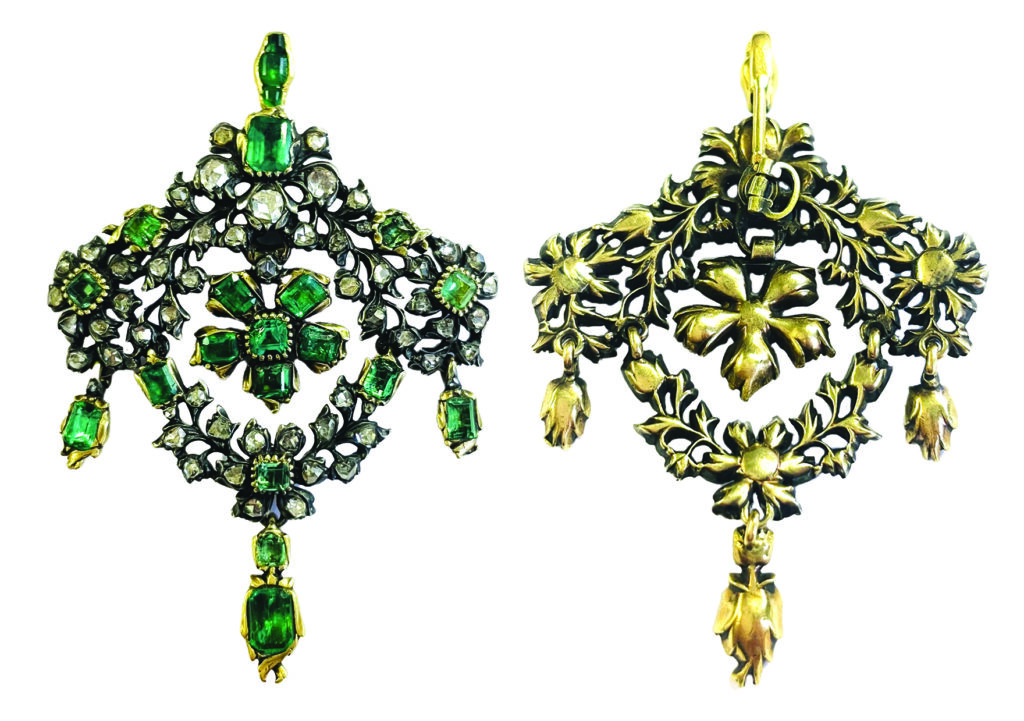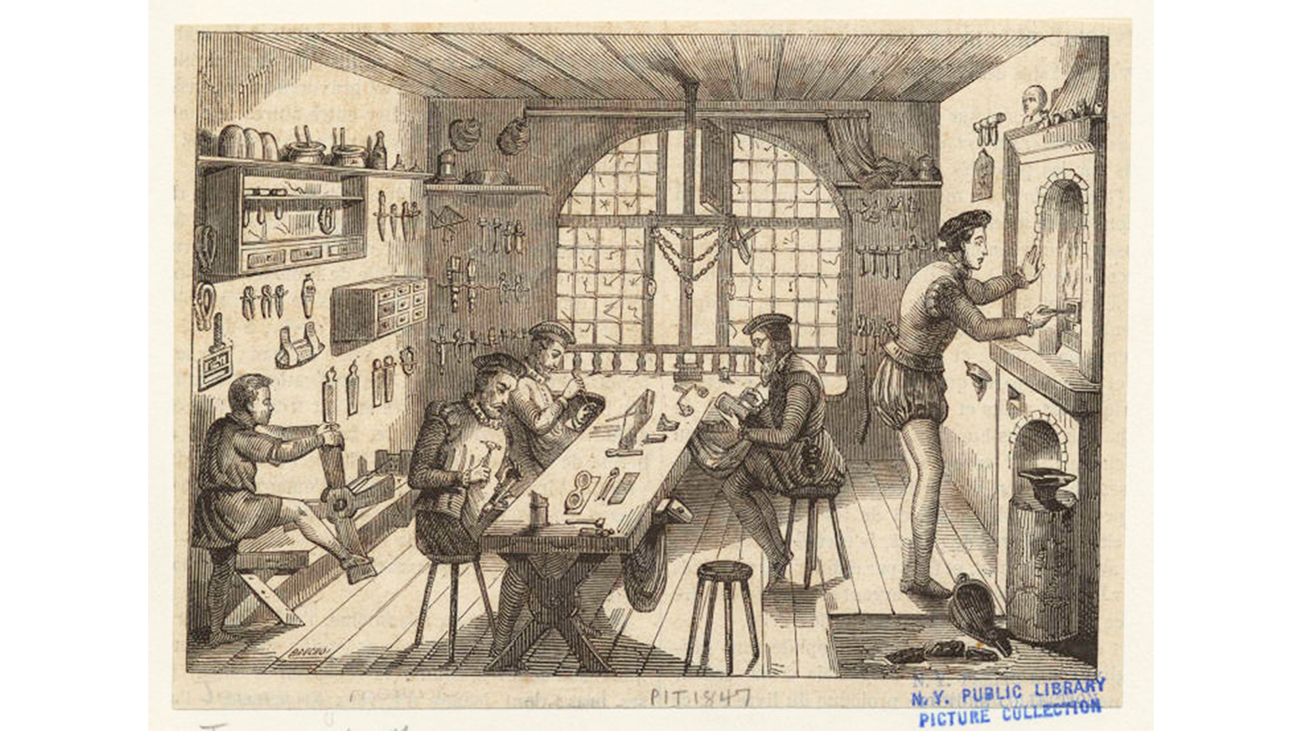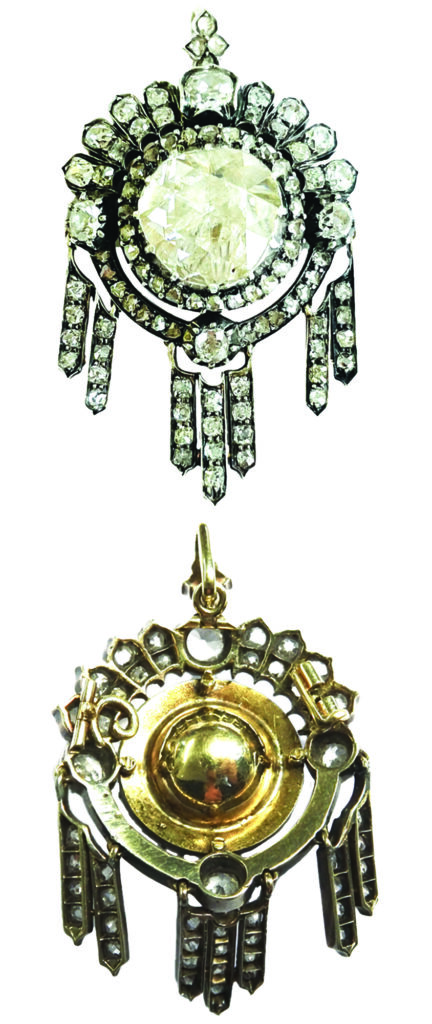We all spend a lot of time gazing at a piece of jewelry. We dissect the design, evaluate the gemstones and assess the metal. However, it’s easy to forget to look at the back of a piece of jewelry, which has its own story to tell. In a really well made piece of jewelry, the back may be as beautiful as the front. And when you’re looking at a piece of vintage or antique jewelry, the back may also give you clues as to when the piece was made, the condition it is in and the maker. Here, we’re taking a look at four types of backings that you will find in vintage jewelry, what they are and how they help to establish when the piece was made.
Closed Back Setting

A closed back setting has metal behind the gems completely enclosing the stone so that only the top shows. This was a commonly used setting in the 1700s during the Georgian era and the early years of the Victorian period. The closed back setting was necessary because during that time stones were often foil backed (sometimes called foiled or foiling) and the closed back protected the foiling. The backs of these jewels were often as ornate as the front just without the gemstones. Foil backed closed settings are a typical characteristic and identifier of Georgian jewelry.
Foil Backing
Foil backing is what it sounds like. A thin piece of foil was placed in the setting behind the stone. Sometimes, but much more rarely, the gem was “painted” with foil. If the stone was a diamond, it brightened the gem. Sometimes color foils were used with colored gemstones to help amp up the color. Basically the purpose of the foil, was to reflect light and add color to the stone. The foil backing process traces back to the Minoan times, around 2000 BC.

Au Jour Setting
Au jour setting, sometimes called a jour or azure, is French and literally means open to light, which is an apt name for this setting as it allows light to flow through the jewel. Au jour settings, which allow the bottom of the stone to be visible, were developed in the 1700’s but didn’t come into common use until the 1800s. An au jour setting is made by piercing or cutting away metal to create an open space. Usually the openings are cone or square shaped and uniform in size, but you will sometimes find jewels with very elaborate au jour work, with mixed shapes creating a unique pattern on the back. It takes a skilled artisan to make au jour settings. In this time consuming process, bench jewelers, using a graver tool, hand cut holes where the stones go, then they cut the shape in the back of the piece.
There are a few benefits to having an au jour setting in a piece of jewelry. As we’ve noted this type of setting lets light in which allows the gems to sparkle and shine more. It’s also easier to clean the stones, which helps to keep them at their sparkling best. An au jour setting uses less metal resulting in a lighter weight piece. And it gives the piece a more finished, elegant look on the back. This type of setting continues to be used today in very fine pieces of jewelry.

Silver or Platinum Topped Gold
Diamonds looked really good set in silver, it’s white color made the diamonds appear whiter and more sparkly. There was however, one really big issue: The silver tarnished and left marks on clothes and skin. It was a big problem for the fashion set. Then in 1767 British jeweler and entrepreneur James Cox, developed a process to back silver with gold so that the gold touched the skin and clothes and didn’t leave stains, but the diamonds still sparkled brightly as they were set in silver. In the late 1800s and early 1900s, when platinum was first being widely used in jewelry, some jewelers would back the platinum with gold. Since platinum doesn’t tarnish or leave stains, this was an unnecessary step and there are very few pieces of jewelry that are platinum topped gold.
The next time you pick up a piece of jewelry, flip it over and take a good look at the back and let it tell you its story.
Featured image (top of page): Jewelry Makers at Work,1847, Wallach Division Picture Collection, New York Public Library.
Authored by Amber Michelle

